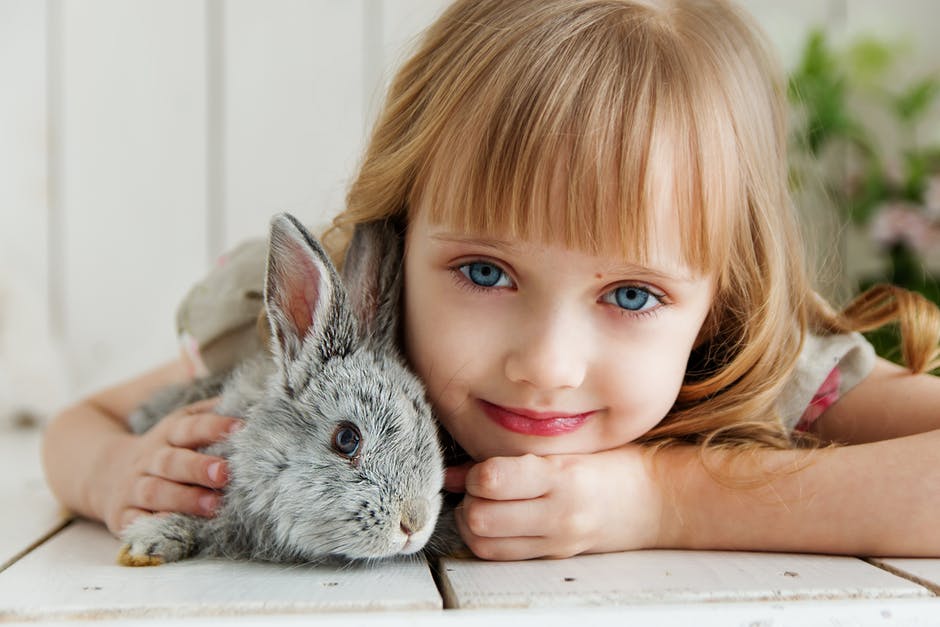Look through the covers and artwork for children’s movies and you will see some reoccurring themes. Bedrooms, sports fields, family homes, the rich iconography of family. The most common, though, is the family pet.
Pets are great. They lift spirits and increase understanding of empathy and compassion. They instill responsibility and a sense of loyalty.
Depending on the pet, they can make wonderful travel companions or something to look forward to seeing after a trip. The best pets for kids form lifelong memories.
Don’t rush out and pick up any pet, though! Read on to learn more about your starter pet options.
Best Pets for Kids
Deciding which pet to get takes some thought. You need to consider the age of your children and the temperament of the pet. Fortunately for you, we’ve broken both of those down right here!
This list doesn’t balk at the straight talk. We all know that children don’t always take care of pets without mistakes. We explain which pets can withstand a few oopsies.
1. Rats
The objections to this pet spring quickly to mind.
They are dirty. They spread diseases. They aren’t cute.
All only conditionally true. Rats and mice make excellent pets under glass.
They are hearty and survive infrequent feeding and watering with aplomb. Rats have a higher intelligence than most rodents and also rarely bite.
They provide squeaks and chortles to delight small children.
The best part of rats as pets is that the skills of taking care of rats prove helpful for other pets. If you have a younger child and an older one with lizards, snakes, or similar, having a food chain around is good for everyone.
Recommended Age: 4+
Pet’s Disposition: Non-aggressive and hearty
2. Cats
A classic pet of ages past. A feisty and creative companion to mankind from our earliest civilizations.
Cats manage to be apex predators and cuddly at the same time. Cats vary wildly in temperament and manageability based on breed and upbringing.
Longer hair cats provide opportunities to learn care and upkeep. Shorter hair cats take less overall maintenance. For the allergic crowd, several breeds of hypo-allergenic cats exist.
If you decide to go for a cat, remember that declawing a cat is a no go. If you can’t keep your kids from roughing up the cat and getting scratched, or train the cat to avoid the furniture, that is on you.
Declawing cats is unbelievably cruel. Sermon over.
Recommended Age: 5+
Pet’s Disposition: Aloof, cozy, forgiving
3. Bettas (the fish)
Colorful, fierce, easy to care for. Bettas take up little space and provide a tranquil visual pet experience.
You don’t need much of an aquarium for a betta, but you do need to take care of the water temp and ph balance to ensure long-term health.
Aeriation isn’t important, though you still want to give the water some breathing opportunity. While you can find pictures of bettas in jars, liquor bottles, and the like, avoid such spaces. The fish might not die overnight from that treatment, but it won’t be happy about it.
Recommended Age: 3+
Pet’s Disposition: Solitary, tranquil
4. Turtles
The introductory reptile for people of all ages. Turtles present strength and a hands-off quality that is great for people that don’t like to put forth emotional energy.
Turtles may seem docile and enigmatic but if you get to know them, they give a lot of affection.
Turtles provide a good mirror for their owners. They reflect back what you project to them.
Heat lamps and hot rocks give turtles a needed boost in their longevity, cold can send them into hibernation. To avoid unsafe temperature drops, consider the merits of inverter generators for temporary power needs.
On the notion of handling and upkeep, turtles are a low cost after the initial set up. They require adequate water, depending on the type, and plenty of insects or vegetable matter.
They are docile critters, so they can take a few days between refilling the food.
Recommended Age: 8+
Pet’s Disposition: languid, grateful
5. Birds
Birds vary in size and upkeep but all present a burst of color and personality.
They require frequent interaction and cleaning. Parakeets are easy to replace (sadly) which makes them a solid starter investment.
More exotic birds require specialized foods and sometimes licenses.
These pets can make a lot of noise if you don’t know how to control their stimuli and day/night input.
All birds require a dedicated cage, clean water, and food. Accessories for entertaining themselves and sharpening their beaks and claws are also highly recommended.
Recommended Age: 4+
Pet’s Disposition: Excitable, erratic
6. Guinea Pigs
Soft, cuddly, loveable and with only a faint musky smell in comparison to their hamster cousins. Guinea pigs love being held and don’t like to bite.
They eat a fair amount, though mostly grains and small fruit bits. They eat out the hand readily and gently. Consider food that kid and pet can share for extra bonding experience.
Guinea pigs need frequent cage cleaning as they run through food quickly. Be careful to get a leak-resistant water bottle to keep them from getting and staying wet, particularly in cold climates.
Recommended Age: 4+
Pet’s Disposition: cuddly, curious
7. Dogs
Yes, you had to wait until the middle of the list. Yes, that was intentional.
What more needs to be said about dogs? They’re dogs.
Loveable, sometimes slobbery, sometimes yappy or meek, it doesn’t matter they are attention seekers and givers.
Dogs come in a variety of sizes and temperaments. You want to match the personality of the dog with the kid. Remember, a bigger breed may start out small but will grow faster than a child.
Dogs require more exercise and space than other pets. Be prepared to take on some responsibility as a parent for those past bedtime walks.
Recommended Age: 7+
Pet’s Disposition: Energetic for country living, laid back for apartments
8. Toads
Fire-bellied toads, specifically make a fine pet. They live in an aquarium, work well in pairs (great for close in age kids), and have exotic coloring.
They eat crickets and mealworms which can be purchased in bulk and are fun to watch in their own right. Just pop some cardboard in the container and let them keep for weeks.
Fire-bellied toads don’t mix well with cats, who will do anything to get their paws on the little meaty treasures.
Toads require ample water and a heat lamp that warms one area while allowing the water to stay cool and refreshing.
Recommended Age: 9+
Pet’s Disposition: quirky, nocturnal
9. Geckos
An easy to care for, fun to watch, exotic looking pet is the Leopard Gecko.
They do well in smaller habitats and like to be held. Two reasons they are a top-flight lizard for first-time pets.
They operate in nocturnal patterns and can cling to the side of almost anything, which can make them a lot of fun to watch at bedtime.
They are also low maintenance, which makes them easy to keep functioning for fickle kids.
Recommended Age: 5+
Pet’s Disposition: nocturnal, docile
10. Brine Shrimp
It is hard to separate the fact and the fiction from brine shrimp. Sold as a novelty toy and gimmick pet by a man with a nefarious history.
Brine shrimp do make good pets. They come to life quickly, they swim about. They live for almost a year and can be swapped with new ones by savvy parents without a child noticing.
As a test pet for kids, they really do bring the ultimate in worry-free adaptation. The time invested in keeping the things alive is the lowest of any listed.
The way they come to life after preparation also gives children a level of investment and ownership is sometimes missing in the pick a pup world of pet stores.
Recommended Age: 3+
Pet’s Disposition: swimmy
11. Fish (social)
A bolder choice than the solo betta, a group of social fish requires more gear and more time investment.
Social fish species offer a stepping up of responsibility for a kid. Low maintenance pets give kids a buffer to learn proper behavior and ownership habits.
Fish require a lot of equipment and know-how to keep healthy. Water temp, ph balance, and aeration levels all need frequent adjustment. Aquariums also need to be cleaned to enjoy watching the fish and for the health of those inside.
Mixed fish can operate without conflict and you can entice a child with ideas of getting new additions over time.
Recommended Age: 6+
Pet’s Disposition: finicky, playful
12. Chinchillas
Our final entry is the semi-exotic fluff bucket known as the chinchilla. This large rodent offers a lot of fluffy fun to watch track through a habitrail or multilevel cage.
Chinchillas need a specialized dust to keep their fur free of gnats and greasy build up.
They eat pellets and vegetables with spots of hay and fruit bits. Chinchillas don’t crave cuddles or reject them.
They are a very agile animal that can move quickly and hide easily. They take a soft hand to guide.
They also have an impressive 12 year and over lifespan, which can make them a good childhood friend.
Recommended Age: 9+
Pet’s Disposition: exhibitionist, playful
Adding to Home
The best pets for kids are the ones your children can take care of and nurture. Pet ownership shouldn’t be taken lightly by you or your children. They are living things that deserve respect and care.
To avoid unwanted stress with a new pet, integrate them into the family slowly. You know what goes great with a pet? a carpetless room for their main staging area.
Check out this article on some DIY flooring.

